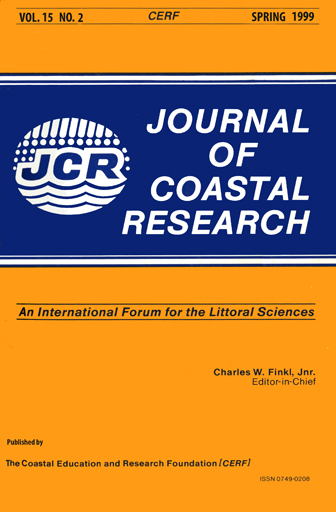Hybrid Model for Bragg Scattering of Water Waves by Steep Multiply-sinusoidal Bars
Keywords:
Hybrid method, Ripple beds, Mild slope equation, High order, Sub-harmonic resonance, Wave reflection, Bragg breakwater, Finite element method, Boundary element method.Abstract
As an extension of the idea of KIRBY (1986), a hybrid model (HM) is developed to study the interaction between surface waves and steep undulating bottoms consisting of slowly-varying and rapidly-varying components. The rapidly varying components are expanded with respect to the slowly-varying components to reduce the error in the dispersion relation. The higher-order terms neglected in the extended mild-slope equation (EMSE) of KIRBY (1986) under the mild-slope assumption are retained in the present HM, which improves the overall prediction capability for steep ripple beds. It is also shown that the HM is reduced to the modified mild-slope equation (MMSE) of CHAMBERLAIN and PORTER (1995) when the rapidly-varying component vanishes. A robust finite element method (FEM) is developed to solve Bragg scattering over ripple beds based on HM, EMSE, and MMSE. A full linear solution is also obtained by a boundary-element-method (BEM) to be used as a bench-mark result. For doubly- and multiply-sinusoidal beds, the results of HM reasonably agreed with the BEM result and were able to predict sub-harmonic and higher-harmonic Bragg scattering. Using the developed computer programs, it is shown that the performance of Bragg breakwaters can be greatly improved by increasing the number of sinusoidal components of ripple beds. The resulting sub-harmonic and higher-harmonic resonances are shown to be significant and greatly increase the bandwidth of high performance region. An appropriate selection of the wavenumbers and phases of bottom undulation may lead to an optimal and practically viable Bragg breakwater.Downloads
Published
1999-04-09
Issue
Section
Articles


